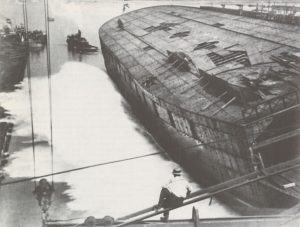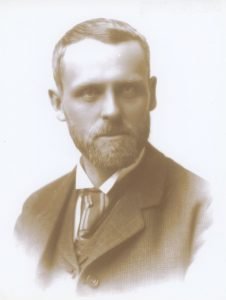
Due to increased railroad traffic across the Straits of Mackinac, the Mackinac Transportation Company decided in 1910 that a new ferry needed to be built. The company had two ferries at the time, the St. Ignace, built in 1888, and the revolutionary Sainte Marie, completed in 1893. These vessels had been designed by noted Great Lakes naval architect Frank Kirby and he was asked to plan the new ship. The keel was laid on June 1, 1911 at the Toledo Shipbuilding Company of Toledo, Ohio as hull number 119. The ship was christened Chief Wawatam after an Ojibway Indian who befriended British fur trader Alexander Henry in the 1760s.
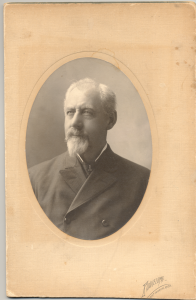
At 9:10 a.m. on August 26, 1911, the Chief Wawatam was side launched with no ceremony or traditional breaking of champagne on her bow. Charles Calder, part owner of the shipyard, recorded that it was a clear day and the launching proceeded with “not a scratch on her hull.” The ship was 338 feet long, 62 feet wide and had a draft of 20.7 feet. Built with a steel hull, she would be the largest and most powerful railroad ferry to serve the straits. She could carry 28 to 32 railroad cars depending on their size. The hull was taken to a fit-out dock where work was completed. The ship set sail for the straits on October 16, 1911 with Commodore Louis Boynton in command.
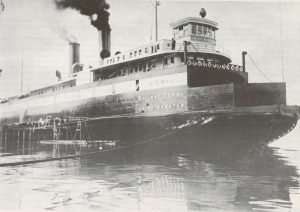
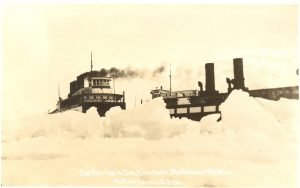 The Chief was constructed with many unique features including three engines, two in the stern for propulsion and one in the bow for ice breaking. The bow propellor first appeared on the St. Ignace after Boynton successfully used two vessels tied bow to bow to break ice. The ship was one of the first to have electricity for lighting although lanterns continued to be carried as backup. In order to protect the open bow, the anchor was placed on the stern. Thus, the vessel could anchor stern-to during a storm preventing water from entering through the sea gate. For many years, the ship bore the words “U.S. Mail” on her bow as she carried letters and packages between the two peninsulas.
The Chief was constructed with many unique features including three engines, two in the stern for propulsion and one in the bow for ice breaking. The bow propellor first appeared on the St. Ignace after Boynton successfully used two vessels tied bow to bow to break ice. The ship was one of the first to have electricity for lighting although lanterns continued to be carried as backup. In order to protect the open bow, the anchor was placed on the stern. Thus, the vessel could anchor stern-to during a storm preventing water from entering through the sea gate. For many years, the ship bore the words “U.S. Mail” on her bow as she carried letters and packages between the two peninsulas.
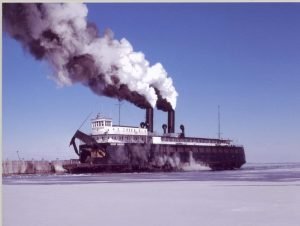 The Chief Wawatam operated at the Straits of Mackinac until August of 1984 when the railroad pier in St. Ignace collapsed. The ship remained tied to the dock until 1988 when the State of Michigan, which owned the vessel, sold it to Purvis Marine Limited of Sault Ste. Marie, Ontario. Prior to her departure, numerous objects, paper material and other items were selected and removed by Mackinac State Historic Parks staff. The plan was for the state park to store the collection until a transportation museum in St. Ignace could be built. Funding for the museum fell through and the state park continues to be the home for the collection. Objects including the ship’s steering wheel and engine room telegraph are on display in the Old Mackinac Point Lighthouse.
The Chief Wawatam operated at the Straits of Mackinac until August of 1984 when the railroad pier in St. Ignace collapsed. The ship remained tied to the dock until 1988 when the State of Michigan, which owned the vessel, sold it to Purvis Marine Limited of Sault Ste. Marie, Ontario. Prior to her departure, numerous objects, paper material and other items were selected and removed by Mackinac State Historic Parks staff. The plan was for the state park to store the collection until a transportation museum in St. Ignace could be built. Funding for the museum fell through and the state park continues to be the home for the collection. Objects including the ship’s steering wheel and engine room telegraph are on display in the Old Mackinac Point Lighthouse.






